How Designer Matthew McCormick Made it Out West
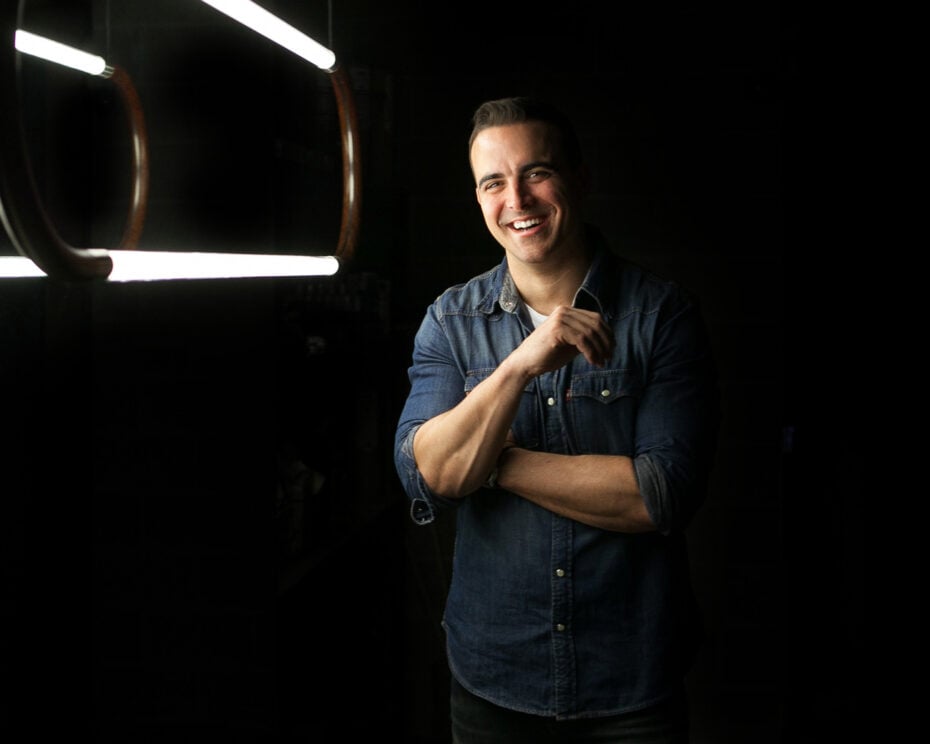
Vancouver designer Matthew McCormick on his journey from art director to lighting brand
Matthew McCormick: I tried my hand at lighting after I bought my first place; I couldn’t afford to get a contractor and build it all out, so I did a lot of stuff myself. I had a white, somewhat sterile kitchen and wanted something organic to offset that. I got a few components online and made this branch-like brass chandelier. It worked out well; that was in 2011 and I still have it. Not long after, a random guest came by and was like, “Hey, I love your lighting, where did you get it?” It turned out he was working on a restaurant, and he asked if I’d help out. So I built my first commissioned piece across the street from my house, in a parking lot, with some hand tools and a blowtorch.
I ended up partnering up in an electrical contracting company, with that guy who “discovered” me, which afforded me to learn everything that goes into doing large-scale installations. I’d been working as an art director with agencies up to that point, and it was a bit of a mind tizzy, going from a white collar role to a blue collar job where I was pulling wire, on a ladder all day. But I knew I needed to learn that stuff in order to get to where I wanted. It was short-lived because my custom lighting started to take off, but it allowed me to combine my creative background with real-life, real-world electrical experience.
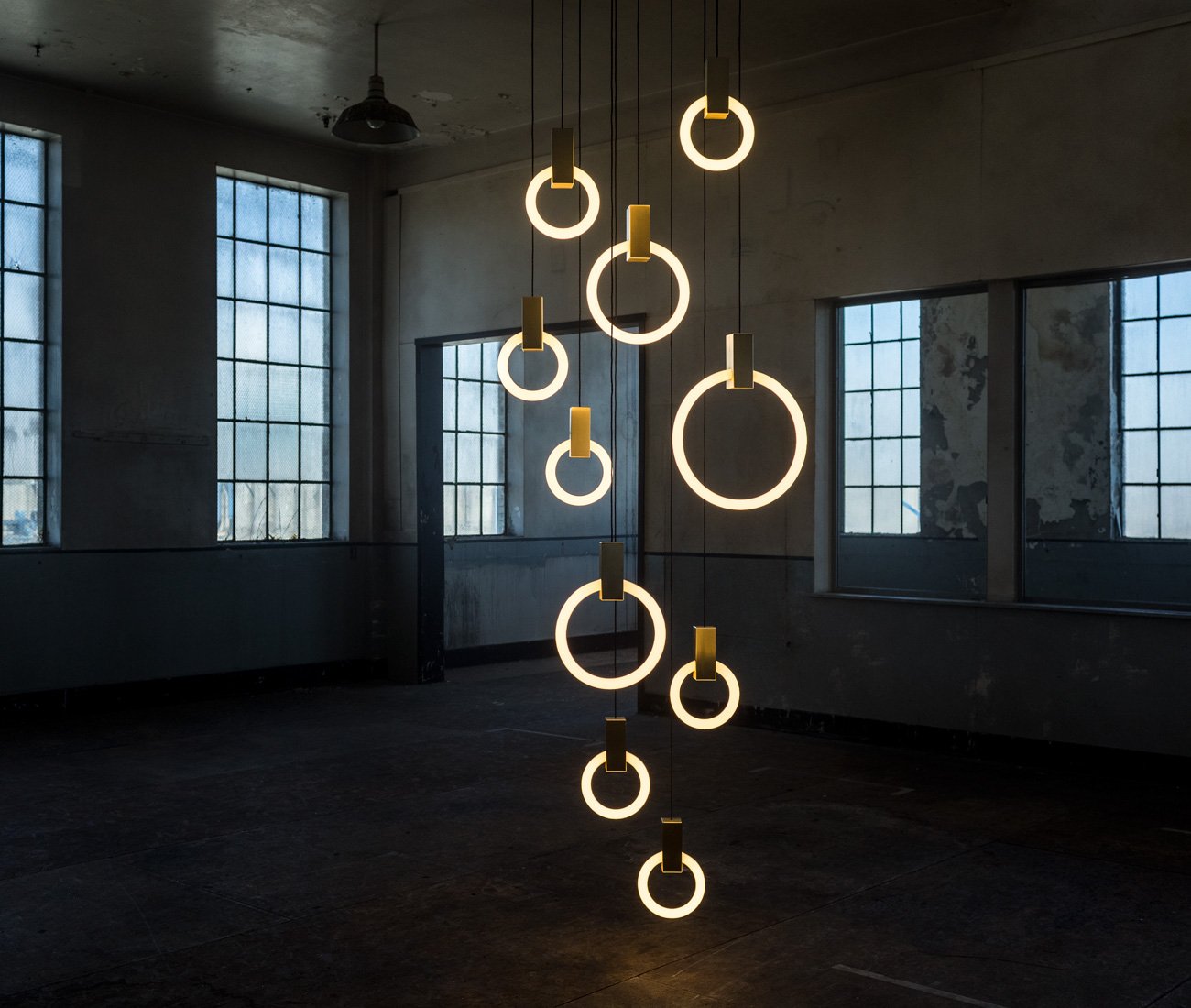
Matthew McCormick’s Halo lights were originally designed as a bespoke two-storey chandelier for a prosecco company. The bubble-like rings were meant to evoke the product’s effervescence.
The Halo chandelier was a bit of a turning point. In 2014 I was working with an Italian prosecco company that wanted a two-storey chandelier. I looked at the brand like, OK… They’ve got this iconic gold bottle, and when I think of prosecco, I think of the effervescence, so that inspired these bubble-like forms. It was something that was banging around in my head anyhow, and it evolved to become a bit of an “aha” moment, where I realized we could scale up the business and get into product. Doing things once is great, but inherently, in creating all this custom work, you’re sort of building a product line as you go. People are coming to me now for versions of things I’ve done before, so I do a lot of iterative work, and much to the chagrin of the guys I work with, I’m constantly improving. Halo optically hasn’t changed since day one, but we’re on vision 11.
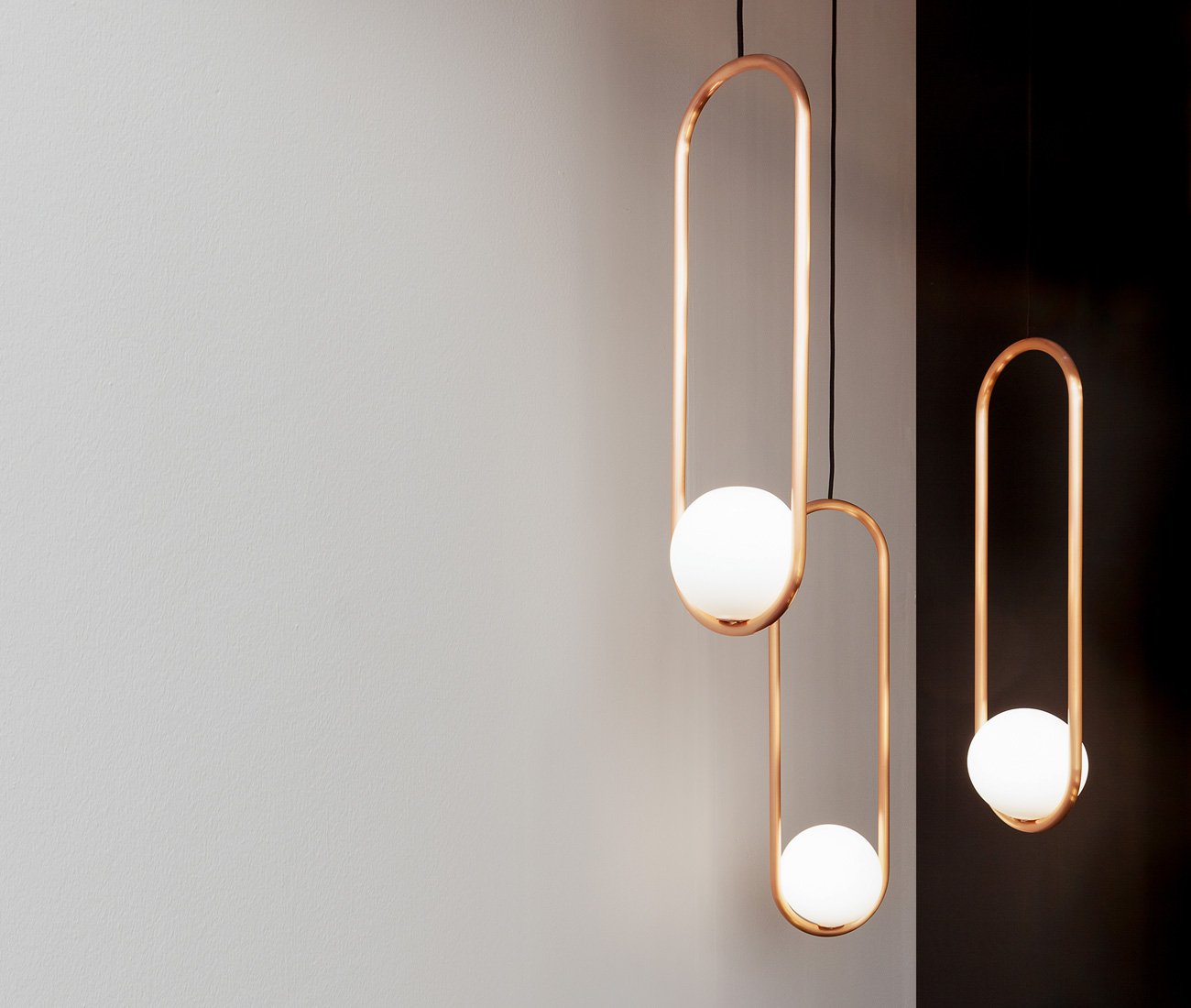
The Mila pendants, which nest pearl-like glass spheres in the embrace of a metal loop, were named for McCormick’s infant daughter.
I think of things very globally, both in design and as a business practice. The first international show I did was Dutch Design Week in 2016, and since then I’ve been able to show at Rossana Orlandi in Milan, and at the London Design Festival. But when I started off and didn’t have any product, it was all about showing process, and social media was great for that. It helped circumvent some of the conversation you have to have. When people were engaged in it, they would understand that we start off with raw material that is then water-jet cut and CNC-ed and hand-finished to create just one tiny component.
It’s easy to want to go abroad to get your margins to a good place, but I feel great saying everything we do is made locally. And that has a certain amount of cachet, even in London and Milan. I think Canada, especially Vancouver, is becoming a bit of a hotbed for design.
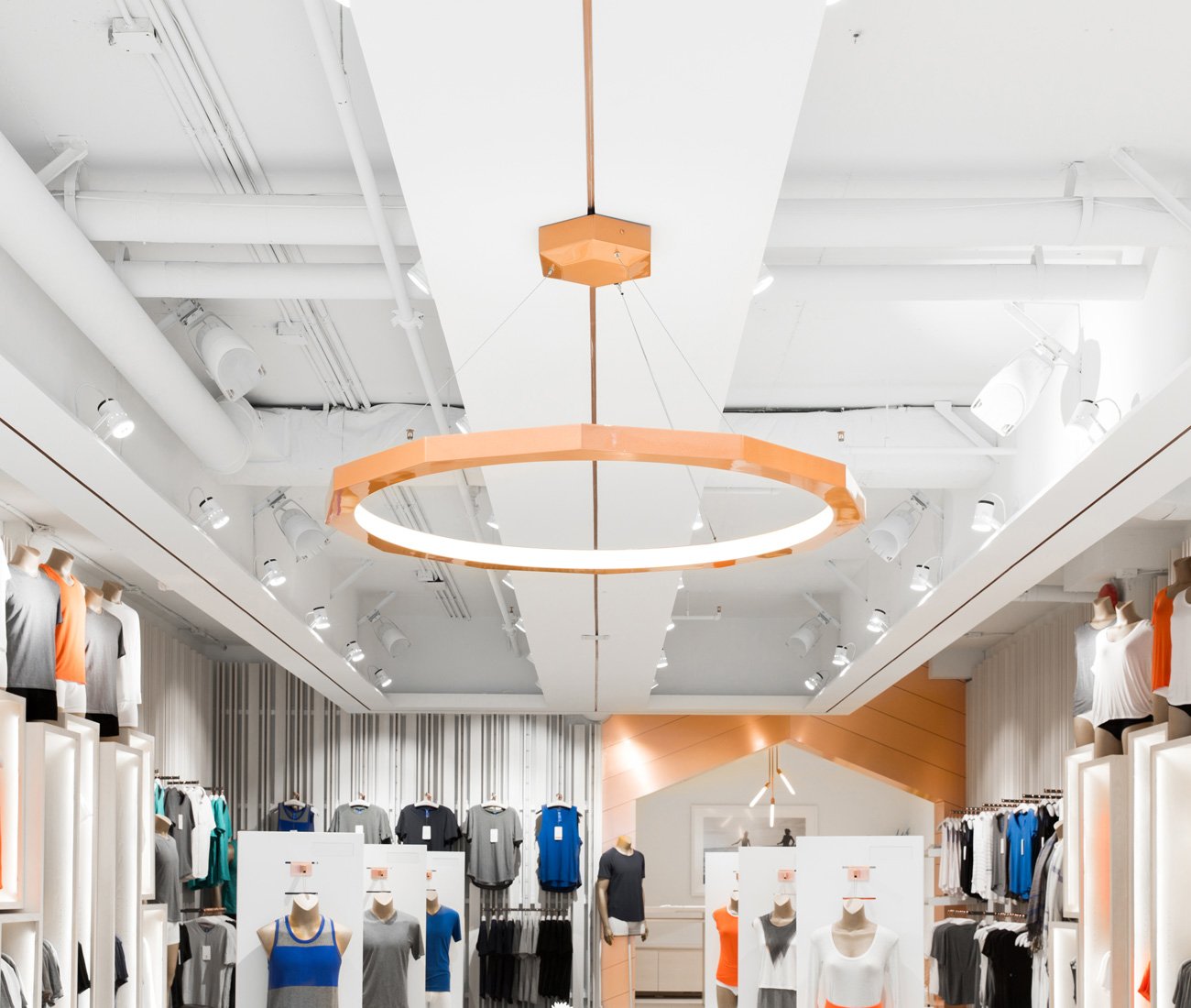
Dodeca features high-density, high-output LEDs and is available in black, white, brass and copper.
Going from custom to having product that you sell direct is one thing, but getting to retail is a completely different beast. We were bombarded with retail requests for years, and it was always like, “We’re not ready; we’re not ready.” You don’t want to screw that up; you only get one kick at the can. The past two years have been all about setting up process and how things are packaged, and making sure pricing’s tight and that we can deliver. Retail is our big push for the new year, but we’re not trying to be everywhere, just in the right places. The ones that have the expertise, the clout. And as we start to scale up, having our own showroom is probably in the cards.
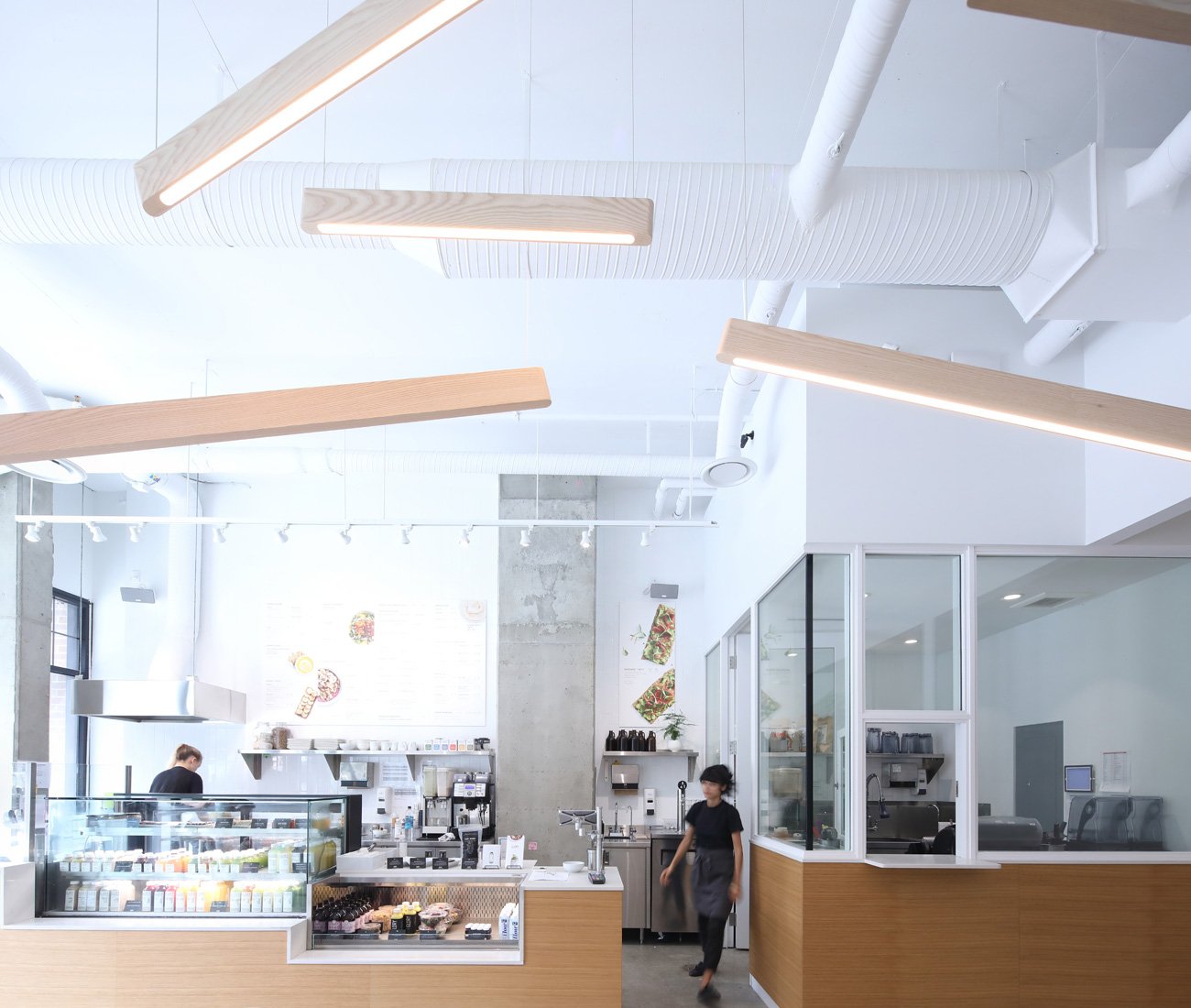
Wooden Line Lights are installed in a log jam formation at McFarlane Biggar’s Glory Juice Co.
I’m kind of a perpetual student: If you know it all you don’t have any opportunity to grow. I’ve learned so much from manufacturers, designers and tradespeople. Just like, working with Steve who does my chemical glass, or, for example, our Line Lights came out of a relationship with a woodworker. Although a lot of what we’ve been doing to date is very industrial, we’re also playing with things like concrete, porcelain or terracotta. I would hope that I continue to evolve; I don’t want to be wedged into a box. matthewmccormick.ca
Find out where to buy Matthew McCormick’s lights in this round-up of Toronto-made products.










